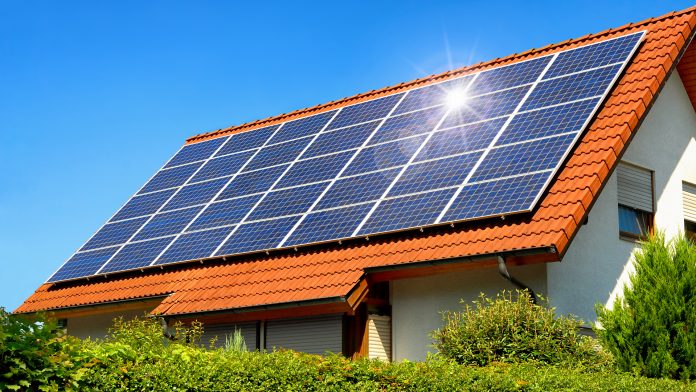Researchers at the National University of Singapore have established an Artificial Intelligence-powered tool to map sustainable rooftops globally.
As regions around the world increase in urbanisation, there is now a greater necessity to increase and optimise existing space and infrastructure. Authorities in many cities are increasing their efforts to figure out how underutilised rooftop spaces could contribute to tackling climate change, as well as aiding food production efforts.
Sustainable rooftops, like those with greenery and photovoltaic panels, can offer improvements to the roadmap for decreasing the carbon footprint of cities. However, while studies have been performed to assess their capacity, very few track the actual performance of cities.
Development of novel AI tool
To address the limitation of current studies, Dr Filip Biljecki, Presidential Young Professor from the Department of Architecture at the National University of Singapore (NUS) School of Design and Environment, and NUS Master of Architecture graduate Mr Abraham Noah Wu, established an automated tool that utilises satellite images to study how rooftops around the world adopt solar panels and/or vegetation. The tool, known as Roofpedia, employs a completely convolutional neural network (deep learning) which enables scientists and policymakers to examine how cities worldwide are making sustainable advancements to their rooftops and utilising them for photovoltaic installations.
This research project has been undertaken by the NUS Urban Analytics Lab, a multidisciplinary research group at the NUS School of Design and Environment. The team’s investigation is published in the international journal Landscape and Urban Planning.
Studying sustainable rooftops in different cities
The group were able to develop an open roof registry with data from one million rooftops across seven morphologically and geographically cities, spanning Europe, North America, Australia, and Asia.
Utilising this data, they established the Roofpedia index to benchmark the cities by the extent of sustainable rooftops. This is obtained by taking into account both the area coverage and the number of buildings equipped with solar and green roofs in a city as a percentage value of the entire area.
Zurich was given an index score of 100 as a result of its high scores in both area coverage and number of buildings for green roofs. The large green roof coverage is the result of endeavours taken by the Zurich City Government in making Green Roofs compulsory for all new buildings since 1991. Las Vegas was the highest in the solar roof adoption in the Index, with a score of 86. This may be as a result of the high solar capacity of the geographical area.
“By collecting such data, Roofpedia allows to gauge how cities might further utilise their rooftops to mitigate carbon emissions and how much untapped potential their roofscapes have. For example, users might complement Roofpedia with other sources of data to study the effectiveness of governmental subsidies and whether climate pledges of others have been followed. In addition, by collecting current data through satellite imagery, users can more accurately determine the present carbon offsetting capacity of cities as well,” Dr Biljecki explained.
Meanwhile, Singapore ranked third out of the 17 cities. Wu commented: “While Singapore has ambitious plans to considerably expand its solar energy deployment by 2030 as part of the SG Green Plan, rooftop solar deployment is largely driven by the government. As such, Roofpedia indicates a higher concentration of solar-enabled buildings in heartland areas such as Woodlands, Jurong, or Ang Mo Kio as compared to other districts like Pasir Panjang. Singapore’s relatively lower score for the number of buildings equipped with solar panels indicates that there is potential in engaging private residential and commercial buildings to further maximise Singapore’s rooftops.”
The team underscored that every city has distinctive qualities, and the precise advantages of greenery or solar panels on rooftops rely on the urban form and design. The geolocation and macroclimate of the city also play a role. For example, in drier areas, green roofs are harder to sustain, while in rainy and dark areas, solar roofs may not be financially feasible. Taking these restrictions into account, a city may still be environmentally progressive without a sustainable roofscape.
Dr Biljecki explained, “Vancouver may not score well in the Index but is nevertheless consistently ranked as one of the most sustainable cities in the world with access to plenty of hydropower, providing for 25 per cent of the city’s energy need alone, and has plans to derive 100 per cent of the energy used from renewable sources before 2050. What the Roofpedia Index does is that it can complement existing sustainability indices by adding a new dimension of consideration in assessing the overall sustainability of a city.”
Roofpedia for a sustainable future
The group has made Roofpedia’s data of one million rooftops publicly available and they aim to persuade other scholars to work in partnership with them to increase the database by studying more cities or encompassing other environmental indicators.
“Our project is designed to be open as cities today are dynamic and rapidly adopting sustainable instruments. In addition, its design is modular, meaning that new geographies, roof typologies, and functions can be added. As such, our research group is planning to add a temporal feature so that users can study the evolution of sustainable rooftop measures over time and how much more cities might increase their roofscapes. We hope that our work can aid researchers, local governments, and the public in understanding and promoting the further use of rooftops in achieving sustainable urban development for a carbon-neutral world,” Biljecki concluded.









